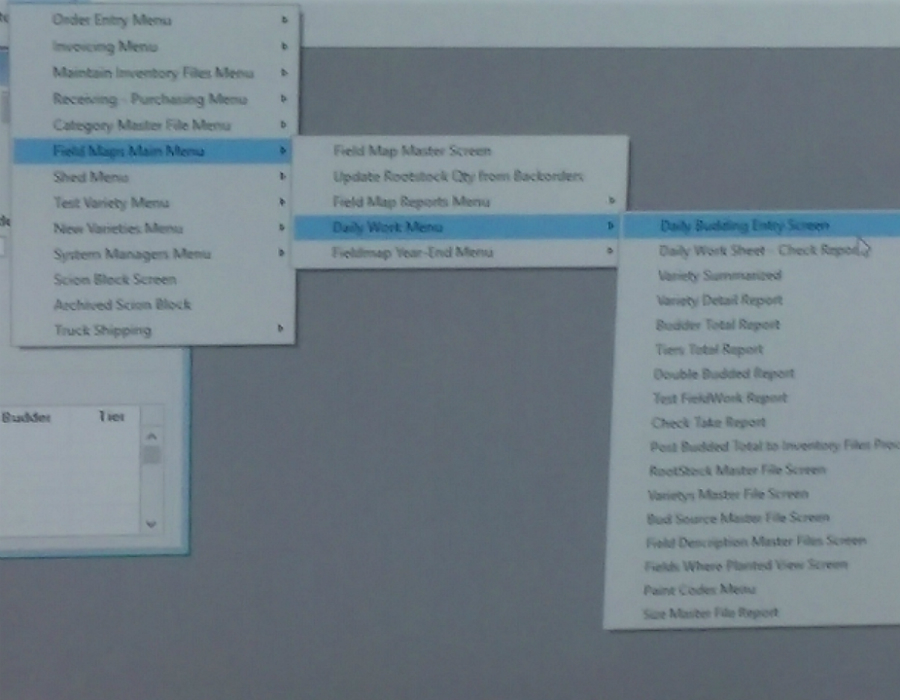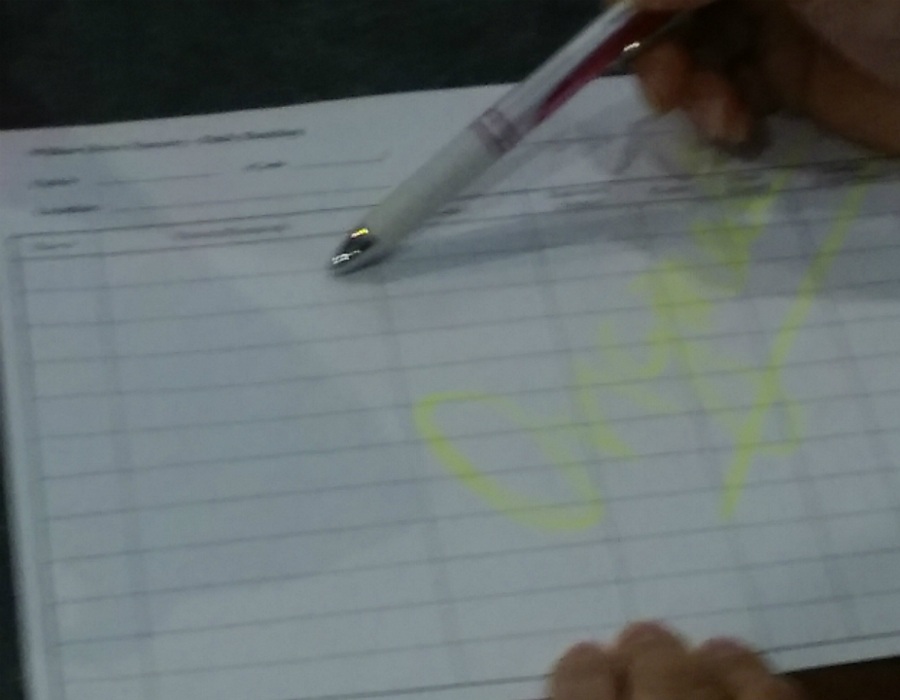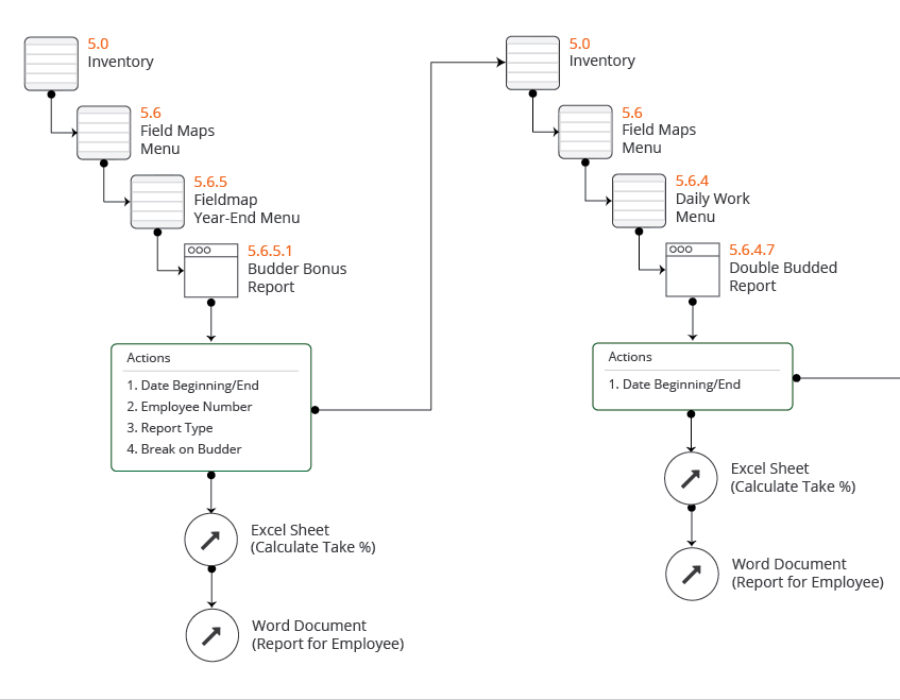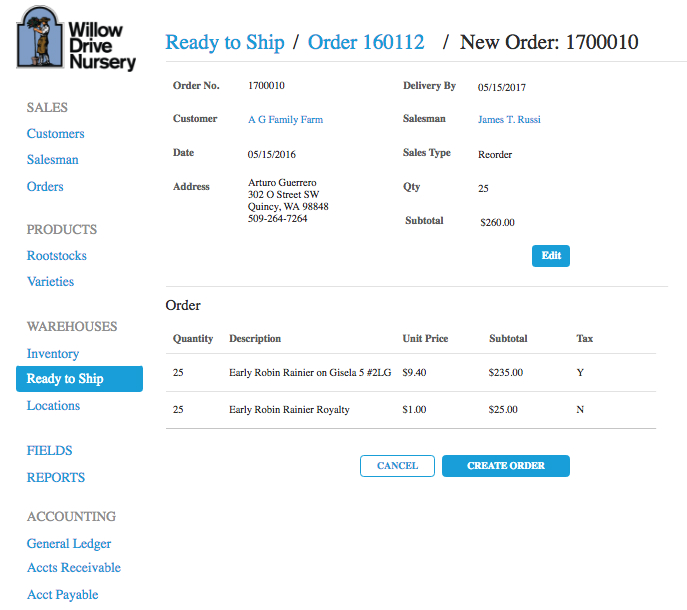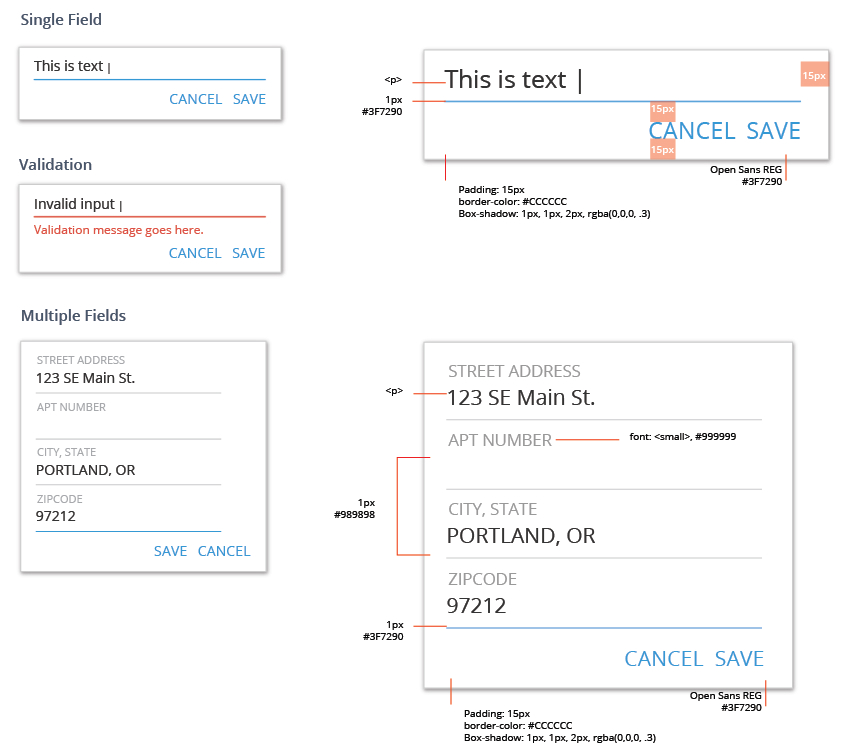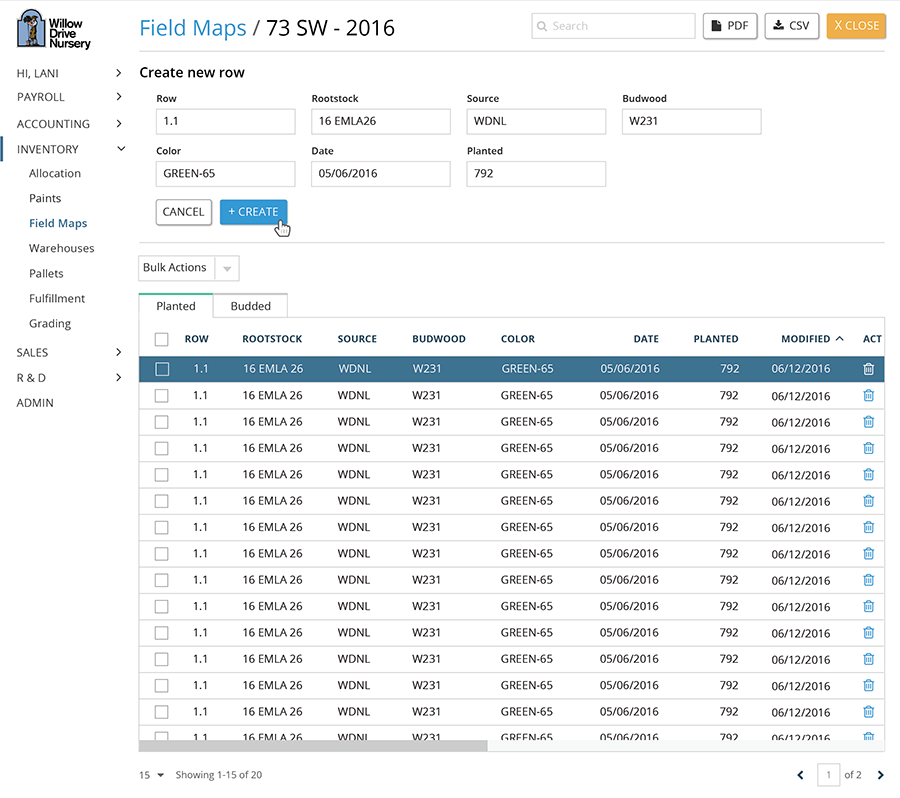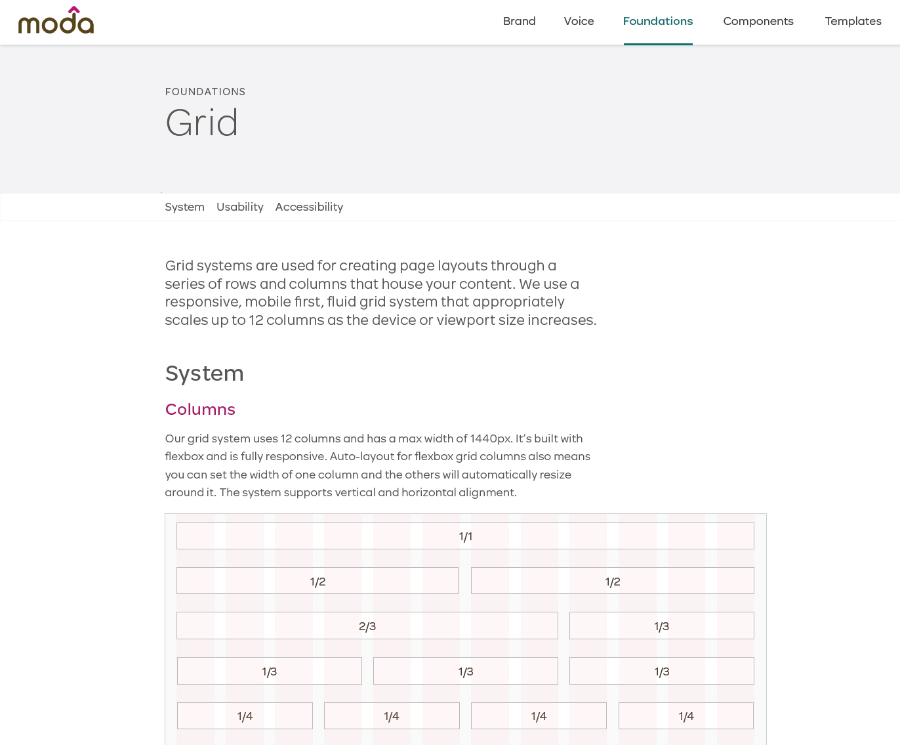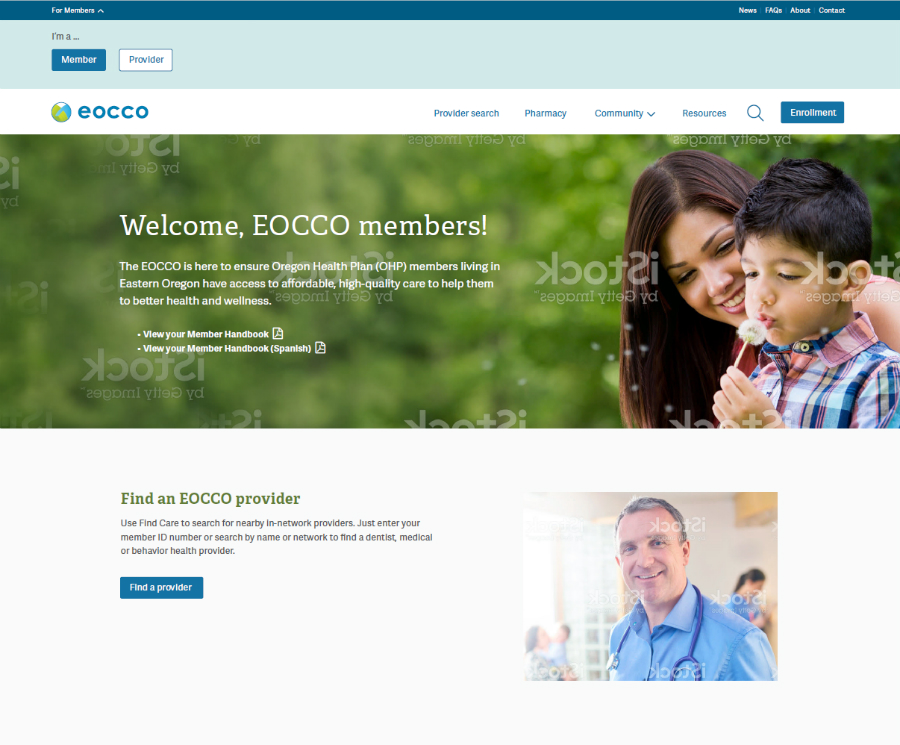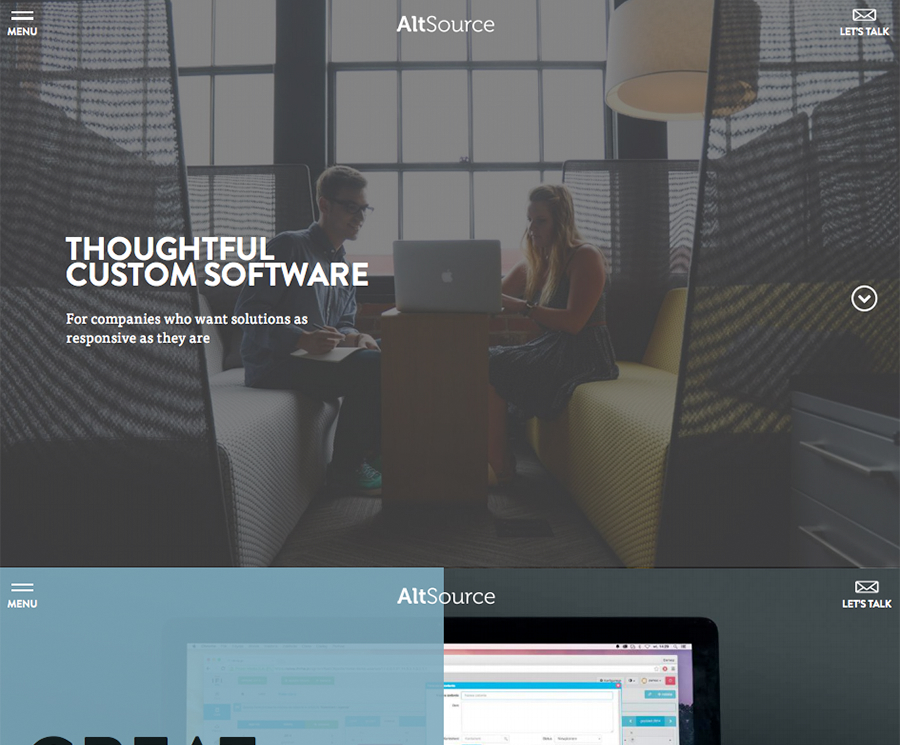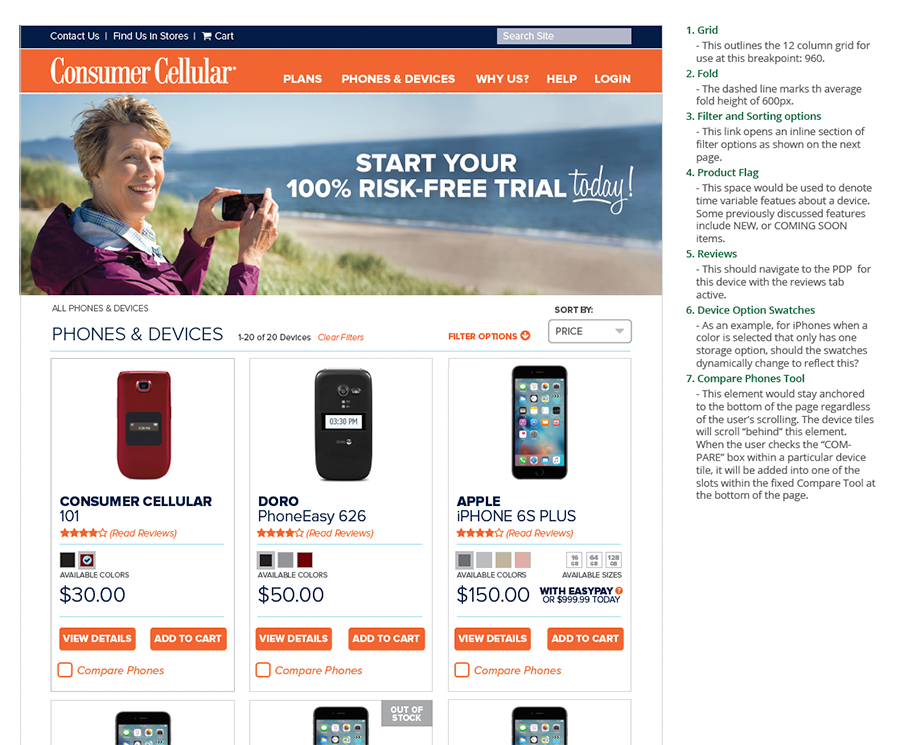Inventory management system | 2016
willow drive nursery
The Story
I redesigned Willow Drive’s 20-year-old inventory management system, eliminating reliance on paper and third-party tools while improving workflow consistency and efficiency. By conducting on-site research, mapping process flows, and prototyping new solutions, I streamlined data entry, improved inventory accuracy, and gave users greater visibility into their operations, allowing them to respond faster to customer needs.
